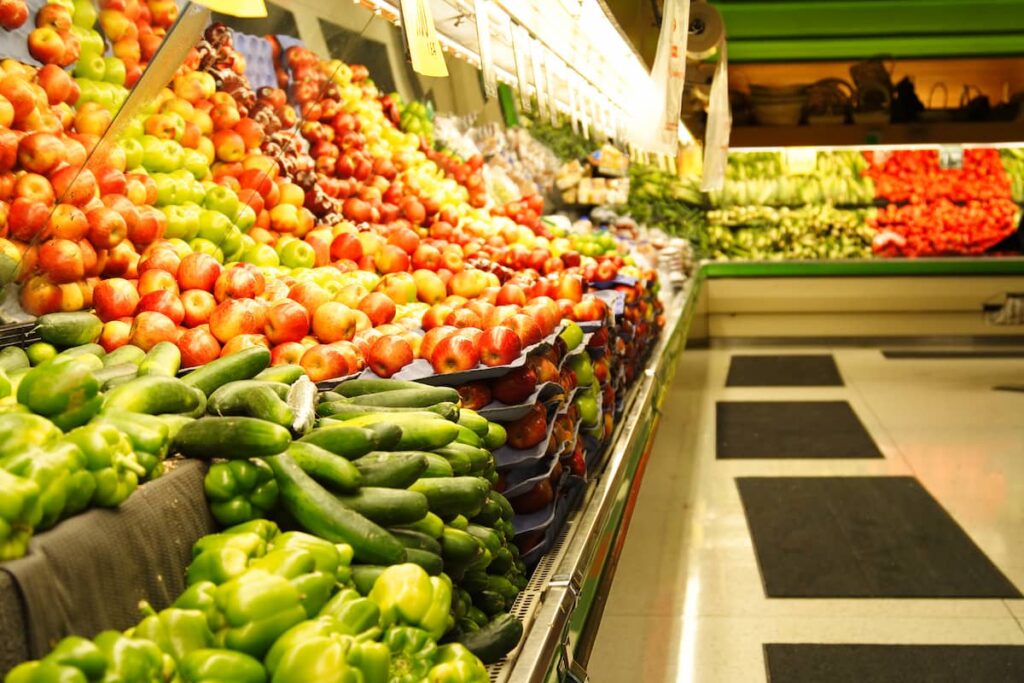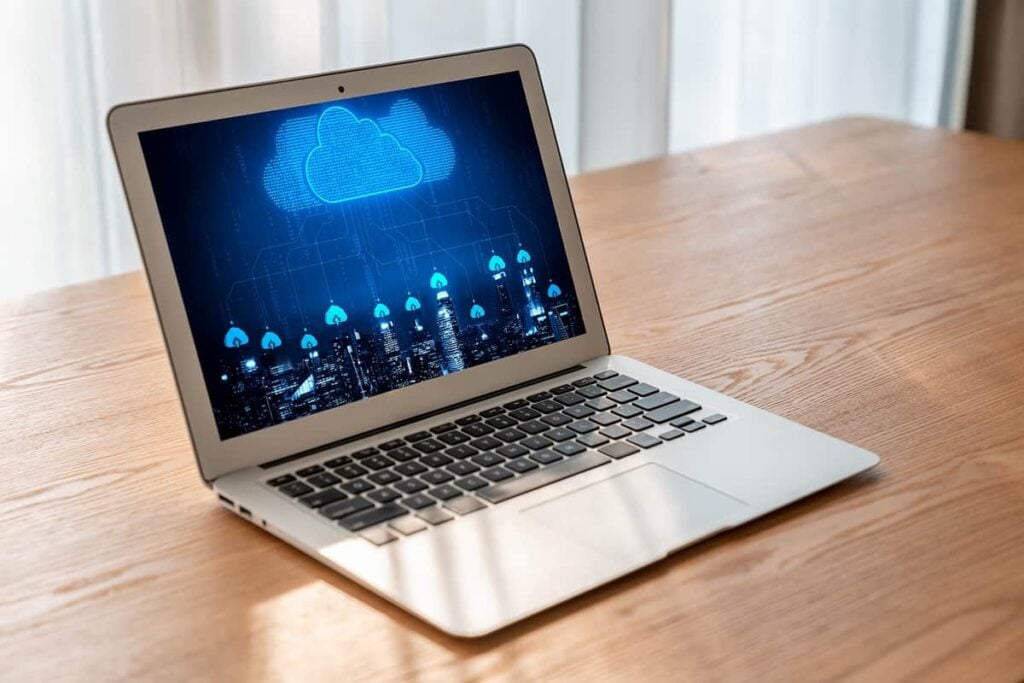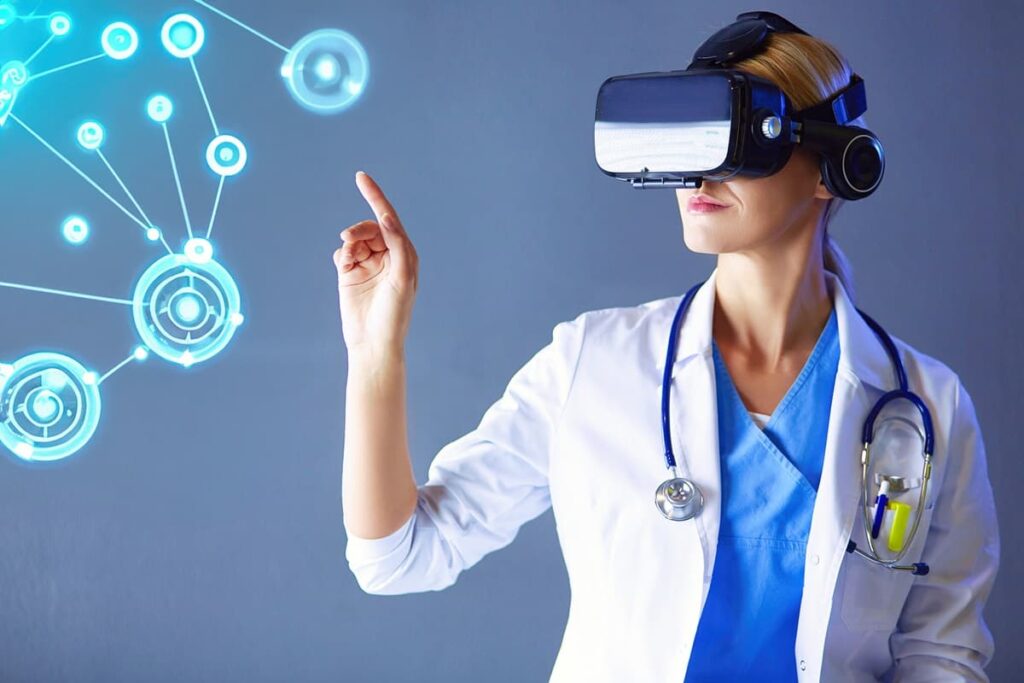11 Examples of Grocery Store Technology
Table of contents

We’ve seen a lot of innovations over the course of the last decade but some industries are still largely behind the times, like insurance for example. Another “industry” that has seen relatively few advancements in the last few decades is the food retail industry or what we like to call “grocery”. By and large, the experience of shopping in a grocery store has remained unchanged. You go in, you run around trying to find everything you’re able to remember you needed, you stand in line waiting at the checkout, and you try to avoid staring at some of the straight-up land monsters that seem to inhabit the larger grocery supermarkets these days. Grocery store technology seems to have stalled.
The most notable advances in grocery stores for shoppers has probably been the self-checkout machines. While convenient, this “technology” seems like a small leap forward compared to advances we’ve seen in other industries over the last few decades. Grocery as a whole could use a makeover (not to mention some of the people you find wandering the aisles). There’s actually quite a few startups looking to reinvent the way that we shop for groceries and bring supermarkets into the future, like these ones courtesy of the bright minds over at CB Insights:
We’ve looked at some of these startups already in previous articles. Blue Yonder offers an inventory management system powered by artificial intelligence (AI) that can reduce out-of-stock rates for its customers by as much as 80 percent and increase profits by more than 5 percent. Nomi assigns each person that enters your store a tracking identifier and then follows what they do in your store, typically delivering an accuracy between 98% to 99%. Estimote builds beacons that can be used to enhance the shopping experience by providing product information and recommendations to shoppers.
One other company we wrote about that’s actually not a startup is SES-imagotag, (formerly Store Electronic Systems) is a publicly traded company that develops electronic shelf labels. They’re up +162% since we wrote about them back in November of 2014. If you want to buy shares, you’ll need an Interactive Brokers account since they trade on the Euronext Paris exchange (EPA:SESL).
In addition to these 4 grocery tech companies we’ve already covered in detail, let’s take a look at 7 more interesting startups offering grocery store technology.
Real-Time Shelf Monitoring

The systems provide analytics and insights that cover display issues, brand share, distribution, and out-of-stock items. Trax’s system could be used to improve shelving and inventory processes in any retail store and current customers include big names like P&G, Coca-Cola, and Nestle. They also offer an IoT “smart fridge/freezer” solution that can be used in vending machines as well. We’re not sure how they keep the cameras from fogging.
Robots that Help Stock Shelves
If you’ve ever stocked shelves in a grocery store, it won’t be too long before you start to accumulate scars on your hands from all the slips of your box knife. While Simbe may not be able to prevent your box knife from slipping, it may be able to help you know where to wheel all those boxes. Simbe has taken in an undisclosed amount of funding to develop the world’s first fully autonomous shelf auditing and retail analytics solution. Simbe’s product, Tally, truly seems at home in the supermarket of the future. The tall, thin robot is designed to perform repetitive and laborious tasks like auditing shelves for current stock levels and identifying pricing errors. Simbe’s Tally can operate during normal operational hours, avoiding customers as it audits shelves.
The company hopes that by automating these small tasks, employees will be freed up to provide a higher level of customer service. The next step will be for all those human-powered pallet jacks to be replaced by robots along with the humans that stock the shelves every night while you’re sleeping. Maybe that’s why Simbe also made our list of “3 Autonomous Robots That May Steal Your Job“.
Grocery Delivery
The grocery store of the future where you choose to shop at may not be a store at all. San Francisco based Instacart offers same-day grocery and home essentials delivery from a variety of stores that lazy first world people already shop at. While this sounds like nothing more than a glorified grocery delivery service, their funding says otherwise. Instacart has taken in a staggering $674.8 million in funding from top-shelf VCs like Andreessen Horowitz, Sequoia Capital, Kleiner Perkins, and even Whole Foods (NASDAQ:WFM). Instacart deliveries come from the store of your choice and are delivered straight to your front door.
According to a recent article by Fortune, Instacart is available in 45 U.S. markets with plans to make the service available to 80% of U.S. households by 2018 and no plans for an Instacart IPO anytime soon. On a side note, profitable U.K. company Ocado (LON:OCDO) is the world’s largest online-only grocery store and is now more heavily automated than Amazon’s warehouse facilities.
Update 03/02/2021: Instacart has raised $265 million in new funding at a post-money valuation of $39 billion, more than doubling its valuation for the second time in a year to scale its growth plans and bring more benefits to the grocery e-commerce ecosystem. This brings the company’s total funding to $2.7 billion to date.
Digital Receipts
Founded in 2011, Florida startup FlexReceipts has raised a total of $5.01 million to develop a digital receipts solution that allows retailers to engage with customers via email. Doesn’t it seem like getting a digital version of every receipt that you are given should be something that is already widely available? Not only will this technology save a great deal of paper, but it also gives shoppers a record of their purchase when they normally would lose their receipt. Flex Receipts is valuable to retailers because it provides multi-channel branding, shopper analytics, easy point-of-sale integration, and the ability to upsell customers through their digital records. The technology is easy to integrate and works with any retailer or POS company.
Virtual Reality Shopping
Founded in 2009, Chicago startup InContext Solutions has raised $42.5 million so far from investors that include AMD (NASDAQ:AMD) and Intel (NASDAQ:INTC) to develop virtual reality retail analytics and simulations. Their platform allows companies to create and modify in-store concepts and observe how consumers react to them in realistic VR simulations.
Additionally, InContext builds virtual environments where VR-connected shoppers are observed in a natural shopping setting for a fraction of the investment that an in-store rollout would require. InContext is one of a few companies in the VR simulation space and they’re poised to become a leader with a client list that includes the likes of Kelloggs, Coca-Cola, Samsung, Nestle, and many others.
Food Management

Brand Interaction

If you happen to live in China, then you’ll know exactly why the Chinese would find this to be very appealing and consequently this “gamification” concept is being rolled out all across the country. Their Chinese name, (促巴卡), actually conveys the sense of fun and delight that Chinese people get everyone gets around promotions. The idea is simply to create little kiosks where people can play games and “interact with your brand”:
While it seems like the value add here may be questionable, their latest campaign with P&G increased sales 2.4x in top stores with no discount or promotion. Plenty of other big brands have signed on like Coca-Cola, Dove, Head and Shoulders, Heineken, Kellogg’s, and Nescafe to name a few.
Conclusion
While researching this article, the one thing we’ve been wondering about the most is this. Just when will we be able to go into a store, put all the items in our cart, have a robot bag them, and just walk out? As it turns out, Amazon (NASDAQ:AMZN) is working on this with a prototype grocery store called “Amazon Go”. You walk in and scan your smartphone, then you take what you want off the shelves, bring it to the robot grocery-bagging machines, and then walk out. As soon as you exit the store, your Amazon account is charged. As you would expect, they use machine learning, computer vision, and all that jazz which they refer to as “just walk out technology“. There is just one 800 square foot location at the moment at 2131 7th Ave. in Seattle. If you want to take a peek at the grocery supermarket of the future, that’s one place to look.
Sign up to our newsletter to get more of our great research delivered straight to your inbox!
Nanalyze Weekly includes useful insights written by our team of underpaid MBAs, research on new disruptive technology stocks flying under the radar, and summaries of our recent research. Always 100% free.



















